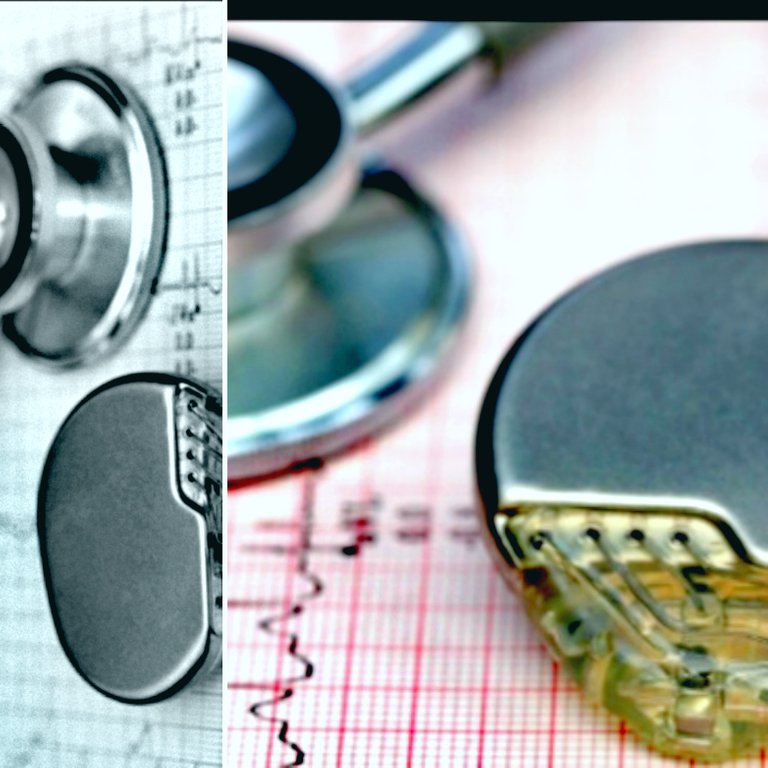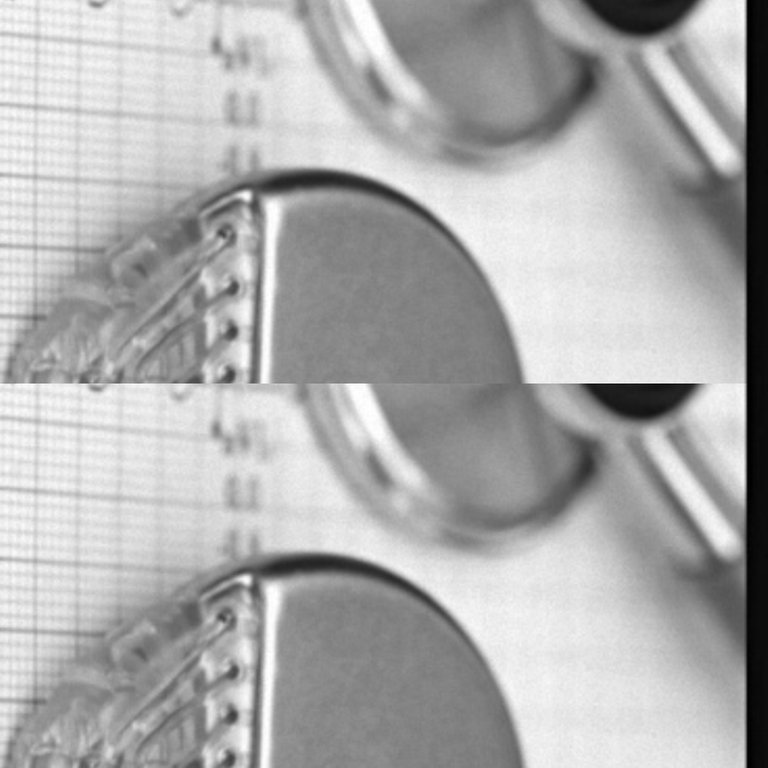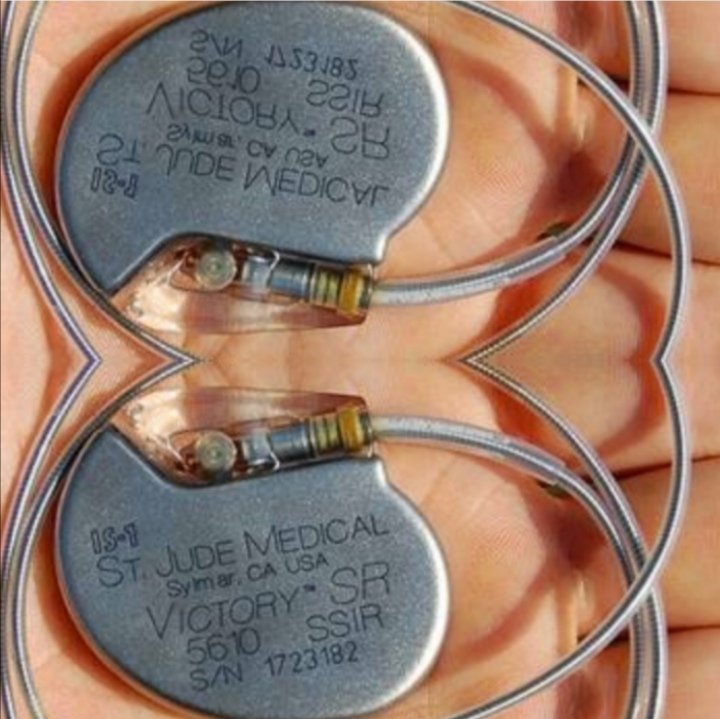
¿Como que un marcapaso Doctor?
La historia a continuación, es verdadera.
Hemos usado iniciales para llamar a nuestro personaje, y así respetar su identidad.
Un día de consulta como cualquier otro en algún lugar de nuestra Venezuela.
¡Pase el próximo paciente!
Se acerca la señora R Z. de 68 años de edad, a quien previamente hemos visto en una consulta dos semanas atras.
Really Doc?, a pacemaker?
The story below is true. We have used initials to call our character, and thus respect his identity. A day of consultation like any other somewhere in our Venezuela.
Come in the next patient! 68-year-old
Mrs. R Z. is approaching, whom we have previously seen in a consultation two weeks ago. How are you? Here we go doc! You could see weakness and an inexplicable weariness for her, which she had started a couple of months ago.
✽――◇◆◇◆◇◆◇◆◇◆◇――✽
¿Cómo estas?
¡Aquí vamos doc!
Se le notaba debilidad y un cansancio para ella inexplicable, que había iniciado hace un par de meses.
En ocasiones se le hinchan las piernas sin causa aparente, otras siente que el corazón se le aceleraba un poco, para luego ser casi imperceptible.
¡Permítame el electro y también su estudio de holter de ritmo!
Nos referimos a el electrocardiograma que le realizamos a la paciente, así como un estudio especial para evaluar si un paciente presenta alguna arritmia cardíaca.
A la paciente R.Z. se lo hemos solicitado 15 días antes.
Luego de la evaluación inicial, teníamos cierta sospecha de lo que podría ser; pero debemos corroborarlo.

How are you? Here we go doc! You could see weakness and an inexplicable weariness for her, which she had started a couple of months ago. Sometimes her legs swell for no apparent reason, other times she feels her heart speed up a little, and then it is almost imperceptible. Let me give you the electro and also your rhythm holter studio! We refer to the electrocardiogram that we perform on the patient, as well as a special study to assess whether a patient has any cardiac arrhythmia. To the patient R.Z. We have requested it 15 days before. After the initial evaluation, we had some suspicion of what it might be; but we must corroborate it.
✽――◇◆◇◆◇◆◇◆◇◆◇――✽

Un día, en clases uno de mis maestros nos decía:
¡La medicina es una ciencia y un arte!
Los médicos hacemos ciencia. Investigamos lo que el paciente presenta y resolvemos de acuerdo a los hallazgos.
Presión arterial un tanto alta, frecuencia cardíaca baja, y cara de poco ánimo en nuestra querida R.Z.
One day, in class one of my teachers told us: Medicine is a science and an art! Doctors do science. We investigated what the patient presented and resolved according to the findings. Somewhat high blood pressure, low heart rate, and low-spirited face in our beloved R.Z.
+✽――◇◆◇◆◇◆◇◆◇◆◇――✽
Pero también, ¡la medicina es un arte!
Bueno, acabamos de corroborar la sospecha, y tenemos la solución a tu problema.
¡Y eso es una buena noticia!
Y ¿cuál es el problema doctor?
Bueno, yo te voy a hablar de la solución, ya que como te dije tu problema tiene solución y es muy sencilla. Y aunque se trata del corazón, las palabras, podrían no describir lo grandioso de la solución y su magnitud.
Siempre en las consultas, así como en la vida, trato de enfocarme en las soluciones más que en los problemas.
La gente está habituada a concentrarse en el problema, a dar vueltas alrededor de él, incluso a nadar allí sin moverse.
Yo por el contrario los llevó a ver la solución, y le doy gracias a Dios por ella. Y le explicó al paciente que es exactamente eso, una solución que él tiene un problema, pero que ese problema tiene una solución gracias a Dios.
But also, medicine is an art! Well, we have just corroborated the suspicion, and we have the solution to your problem. And that's good news! And what is the problem doctor? Well, I'm going to tell you about the solution, since as I told you, your problem has a solution and it is very simple. And although it's about the heart, the words may not describe the greatness of the solution and its magnitude. Always in consultations, as well as in life, I try to focus on solutions rather than problems. People are used to concentrating on the problem, going around it, even swimming there without moving. I instead led them to see the solution, and I thank God for it. And he explained to the patient that it is exactly that, a solution that he has a problem, but that problem has a solution thanks to God.
+✽――◇◆◇◆◇◆◇◆◇◆◇――✽
Está bien doctor, ¡hábleme de la solución!
¡Sencillo mi querida R.Z.! la solución a tu problema se llama marcapaso cardíaco.
R.Z. se llevó las manos a la boca, puso ojos de sorpresa que fueron seguidos por expresión de tristeza.
No importa cuánto énfasis hubiera yo hecho en que teníamos una solución, la paciente se enfocó en el problema.
Pensó lo peor, vio una catástrofe y comenzó a llorar.
Debí esperar a que se calmara, hablar con ella, entenderla hacerle ver la solución.
Los pacientes piensas que un marcapaso es dañino, y resulta que lo dañino es lo que está enfermando a su corazón, que nos está obligando a disponer de un marcapaso que gracias a Dios existe.
La electricidad sale de un sitio del corazón, lo estimula y el hace su trabajo mecánico de bombear la sangre.

Pero sí se tarda mucho el impulso eléctrico en generarse, o en llegar, o en distribuirse, el corazón fallará tal como sucede en nuestras casas cuando de pronto se va una fase o se va la luz, y deja de trabajar.
¡Ese es el verdadero problema del paciente!
Si a su teléfono móvil se le daña la batería, y usted la cambia y sigue funcionando normalmente.
Eso es exactamente lo que es un marcapaso. una batería auxiliar, una batería de repuesto.
Así se lo explicamos a R.Z. Se calmó y pudo ver que había una solución.
Okay doctor, tell me about the solution! Simple my dear R.Z.! The solution to your problem is called a cardiac pacemaker. R.Z. He put his hands to his mouth, eyes of surprise that were followed by an expression of sadness. No matter how much emphasis I would have placed on our having a solution, the patient focused on the problem. He thought the worst, saw a catastrophe, and started crying.
I should have waited for her to calm down, talk to her, understand her, make her see the solution.
Patients think that a pacemaker is harmful, and it turns out that what is harmful is what is making their heart sick, that is forcing us to have a pacemaker that thank God exists.
Electricity comes from a place in the heart, stimulates it, and it does its mechanical job of pumping blood.
But if the electrical impulse takes a long time to be generated, or to arrive, or to distribute, the heart will fail just as it happens in our houses when a phase suddenly goes out or the power goes out, and it stops working.
That is the real problem of the patient.
If your mobile phone is damaged, and you change it and it continues to work normally. That is exactly what a pacemaker is. an auxiliary battery, a spare battery. This is how we explain it to R.Z. He calmed down and could see that there was a solution.
+✽――◇◆◇◆◇◆◇◆◇◆◇――✽

Después de llorar por un rato, pudimos reír.
R.Z. fue a su casa y habló con su familia, quienes se presentaron después en el consultorio; y ya venía muy decidida, con el rostro límpido, resplandeciente, aunque un poco ansiosa porque la familia desconocía lo que ella pudo entender.
Y R.Z. recibió su marcapaso cardíaco.
Dejó de tener los pies hinchados, de cansarse, ya no sentía el agotamiento, ya no sentía que le faltaba el aire, ya caminaba más rápido que antes. Respiraba mejor.
¡R.Z. era otra paciente desde ese día!
En la consulta de control la evaluamos. Esta vez con una cara sonriente y enérgica.
Todo estaba normal. Su marcapaso está funcionando excelentemente, su ecocardiograma demostró que su corazón tenía gran fuerza para trabajar.
Y por cosas de Dios, ese día acudió una paciente con un problema eléctrico cardíaco. Requería un marcapaso.
After crying for a while, we were able to laugh. R.Z. He went to his house and spoke to his family, who then appeared at the office; and she was already very determined, her face limpid, resplendent, although a little anxious because the family did not know what she could understand. And R.Z. you received your cardiac pacemaker. He stopped having swollen feet, tired, he no longer felt exhaustion, he no longer felt short of breath, he was walking faster than before. I breathed better. R.Z. I was another patient from that day! In the control query we evaluate it. This time with a smiling and energetic face. Everything was normal. His pacemaker is working excellently, his echocardiogram showed that his heart had great strength to work. And for God's sakes, that day a patient came with an electrical heart problem. It required a pacemaker.
+✽――◇◆◇◆◇◆◇◆◇◆◇――✽
Tuve una idea que después se hizo rutina.
Llamé a R.Z. y le pedí que se sentara en mi silla, para que hablara con la paciente.
R.Z. no salía de su asombro. Sonreía, pero los ojos le brillaban.
La otra paciente tenía mirada de desconcierto. No entendía,
¡Te voy a pedir 10 minutos con la señora para que le explique desde el punto de vista del paciente lo que es un marcapaso.
Cuando regresé a mi consultorio con los familiares de la paciente, ambas estaban sonrientes. La señora le dijo a sus hijos y a su esposo ¡me voy a poner mi marcapaso!
Le di las gracias a R.Z. que se retiró sonriente.
Desde ese día, cada vez qué R.Z. estaba en la sala de espera y yo tenía algún paciente con algún tipo de problema cardíaco que podía requerir un marcapaso, la hacía pasar y la convertía en la asistente de la consulta de ese paciente.
I had the idea that afterwards it became routine. I called R.Z. and I asked her to sit in my chair, to talk to the patient. R.Z. it did not come out of his amazement. He was smiling, but his eyes sparkled. The other patient had a puzzled look. I did not understand, I'm going to ask you 10 minutes with the lady to explain to you from the patient's point of view what a pacemaker is.
When I returned to my office with the patient's relatives, they were both smiling. The lady said to her children and her husband, I'm going to put my pacemaker on!
I thanked R.Z. who left smiling. Since that day, every time R.Z. She was in the waiting room and I had a patient with some type of heart problem that might require a pacemaker, I put her through and made her the assistant in that patient's office.

+✽――◇◆◇◆◇◆◇◆◇◆◇――✽
Excelente personaje R.Z.
Sonreía y entraba grandiosa a ver a la que era su paciente ahora.
Gracias por ser grandiosa, R.Z.
Dedicado a todos los pacientes que requieren marcapaso.
Excellent character R.Z. He smiled and walked in great to see who was his patient now. Thanks for being great, R.Z. Dedicated to all patients who require a pacemaker.
Historia adaptada de un caso real
Adaptación: Dr. Rodolfo Méndez
Edición: Social Medicine Project.
Story adapted from a real case Adaptation: Dr. Rodolfo Méndez Edition: Social Medicine Project.
Me encanta como puedes mezclar la expresión literaria con tu consulta y hacerme sentir parte de la historia, hoy día ustedes los médicos son los héroes de la humanidad. mis bendiciones para ti. Un abrazo
Una excelente narración... mantienes al lector en lectura, además que aprendemos del tema...
Muchas gracias por compartir ❤